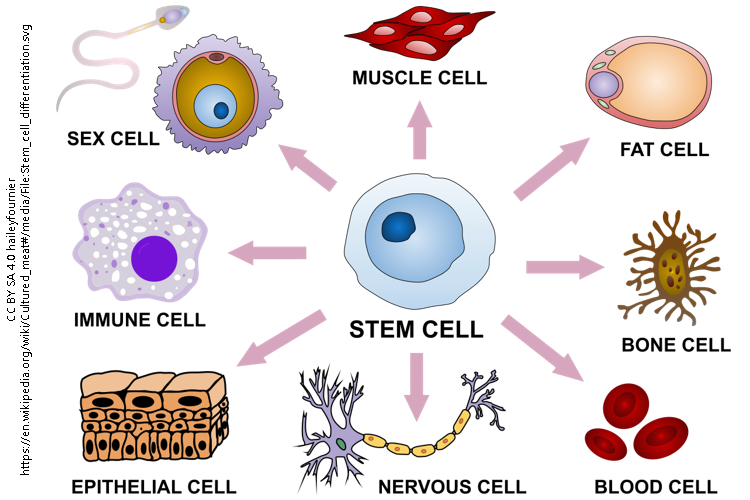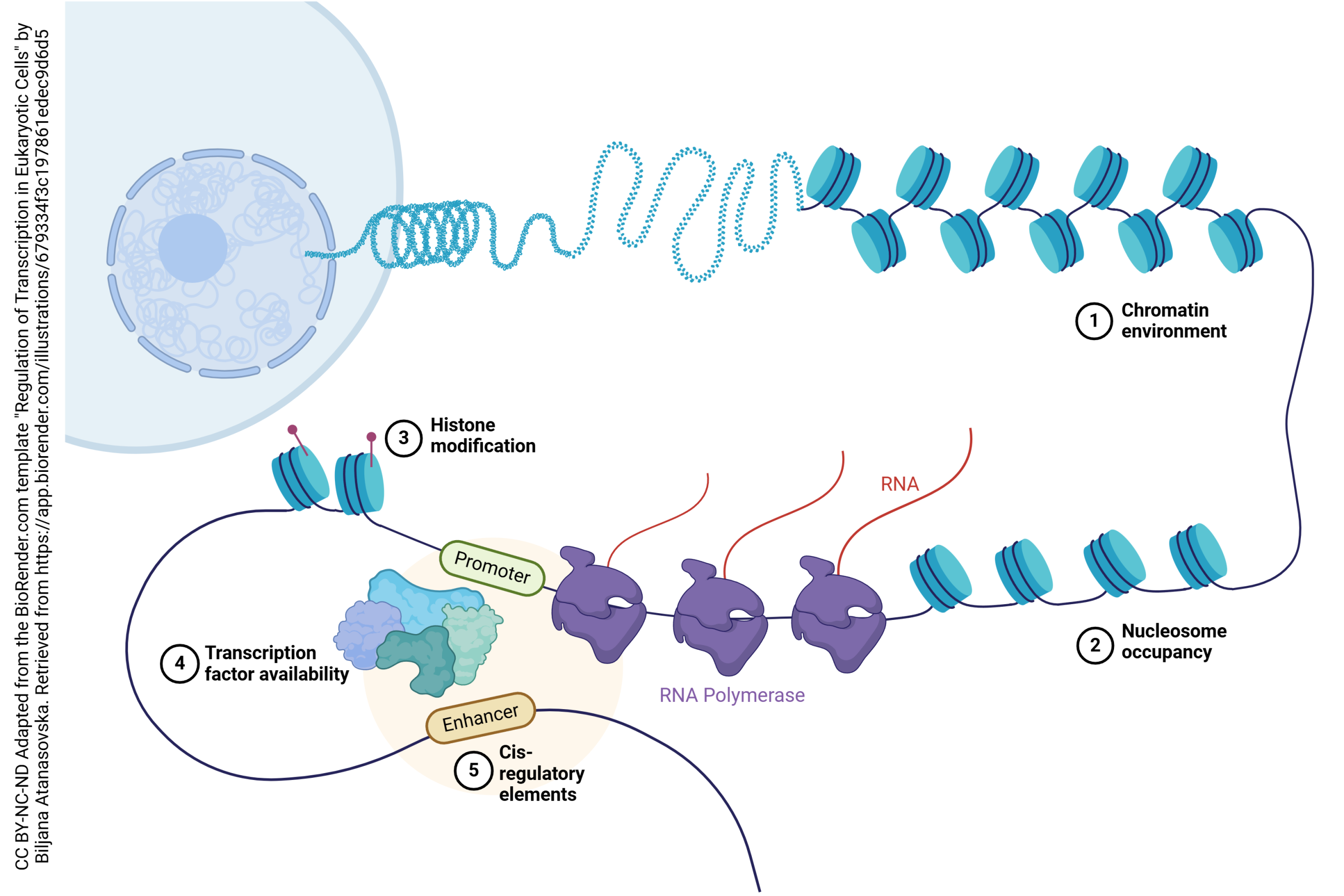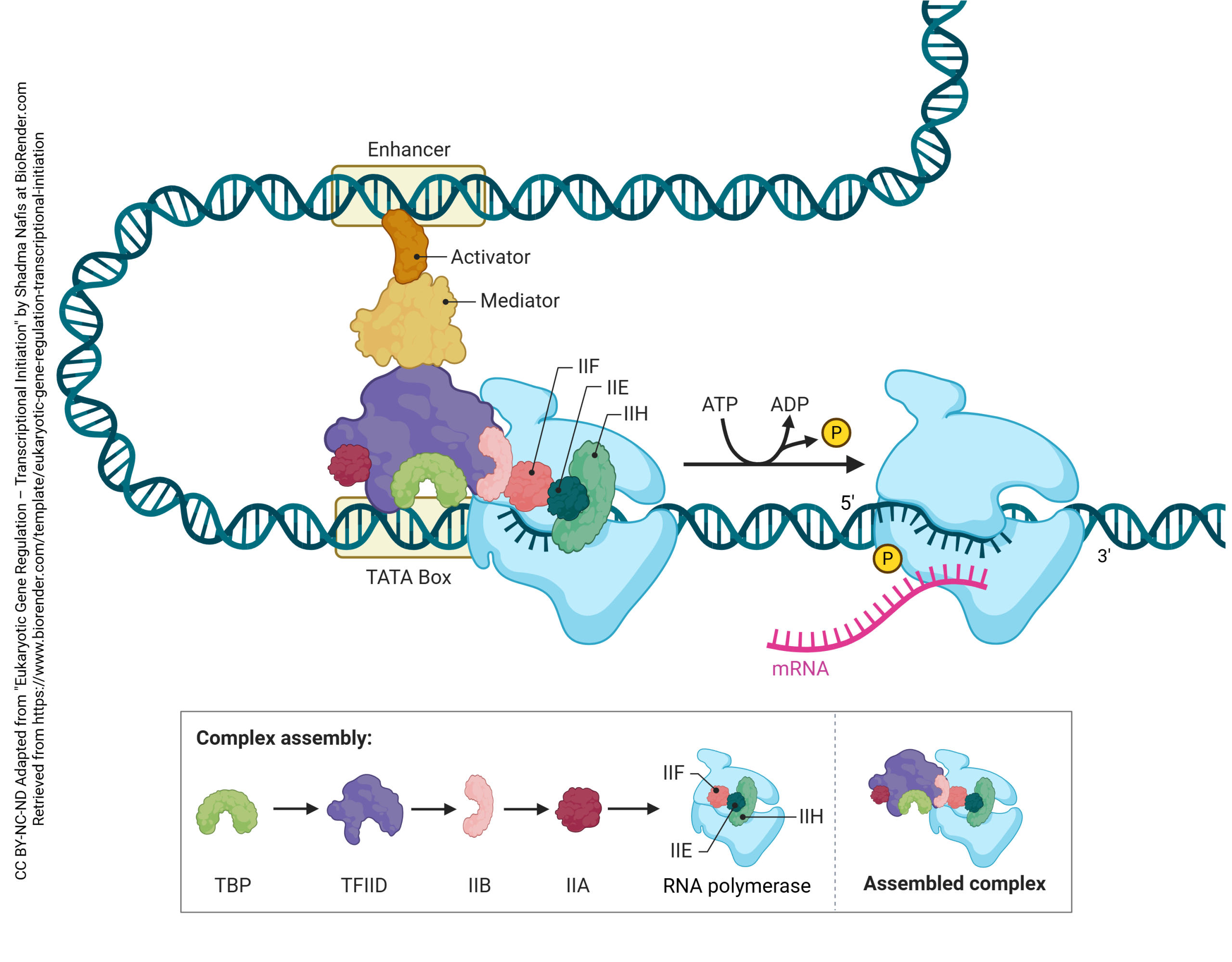Regulation of Transcription
Elizabeth Rebarchik
Objective 3: Summarize the ways in which transcription is regulated.
Molecular Biology Objective 3 Video Lecture
All cells in the organism share the exact same DNA (with very rare exceptions that we won’t consider here).
Yet, we know that a cell can become different from its neighbors — a process that naturally enough is called differentiation.
 How does an epithelial cell become different from a nerve cell? If there is no significant change in the DNA, then differentiation must be achieved by regulating the transcription of genes, turning “on” the genes needed to become a neuron and turning “off” the genes needed to become an epithelial cell.
How does an epithelial cell become different from a nerve cell? If there is no significant change in the DNA, then differentiation must be achieved by regulating the transcription of genes, turning “on” the genes needed to become a neuron and turning “off” the genes needed to become an epithelial cell.
This process of switching genes “on” or “off” is called transcriptional control: we control the process of transcription by making it more likely that RNA polymerase will bind to the gene we want to turn “on”, or less likely that RNA polymerase will bind to the gene we want to turn “off”.

This can be done in a fairly brutish fashion by physically blocking RNA polymerase. When DNA is packed tightly, as it is in heterochromatin, the RNA polymerase cannot access the DNA template and the genes in this region are turned “off”.
Another way to change the expression of proteins is to temporarily and dynamically change the transcription of certain genes. “Upstream” or on the 5’ side of the gene itself, there are regulatory sequences in the DNA that provide the cell with “on” or “off” switches.
The most important of these, that do exactly what you expect them to do from their name, are called promoters: they promote the transcription of a gene. A bit further 3′ from the promoter is a region called an enhancer which also helps to create structures that promote binding of RNA polymerase.

Most diagrams show the structure of a gene as a long line. In reality, when RNA polymerase is coaxed into transcribing a gene, the transcription factors that bind to the promoter region form a loop of DNA, as shown here. The phrase “transcription factors” describes a wide variety of nucleic acids and proteins that can bind to DNA and alter gene expression. An enhancer and a TATA box upstream from the open reading frame of the gene are bound by a complex of activator, mediator, and transcription factors (TATA binding protein, transcription factors IID, IIB, IIA, IIF, IIE, and IIH are shown here). The formation of this complex makes it more or less likely that a gene will be transcribed.
Media Attributions
- Stem cell differentiation © Hailey Fournier is licensed under a CC BY-SA (Attribution ShareAlike) license
- Regulation of Transcription in Eukaryotic Cells © Biljana Atanasovska adapted by Jim Hutchins is licensed under a CC BY-NC-ND (Attribution NonCommercial NoDerivatives) license
- Eukaryotic Gene Regulation – Transcriptional Initiation © Shadma Nafis adapted by Jim Hutchins is licensed under a CC BY-NC-ND (Attribution NonCommercial NoDerivatives) license

